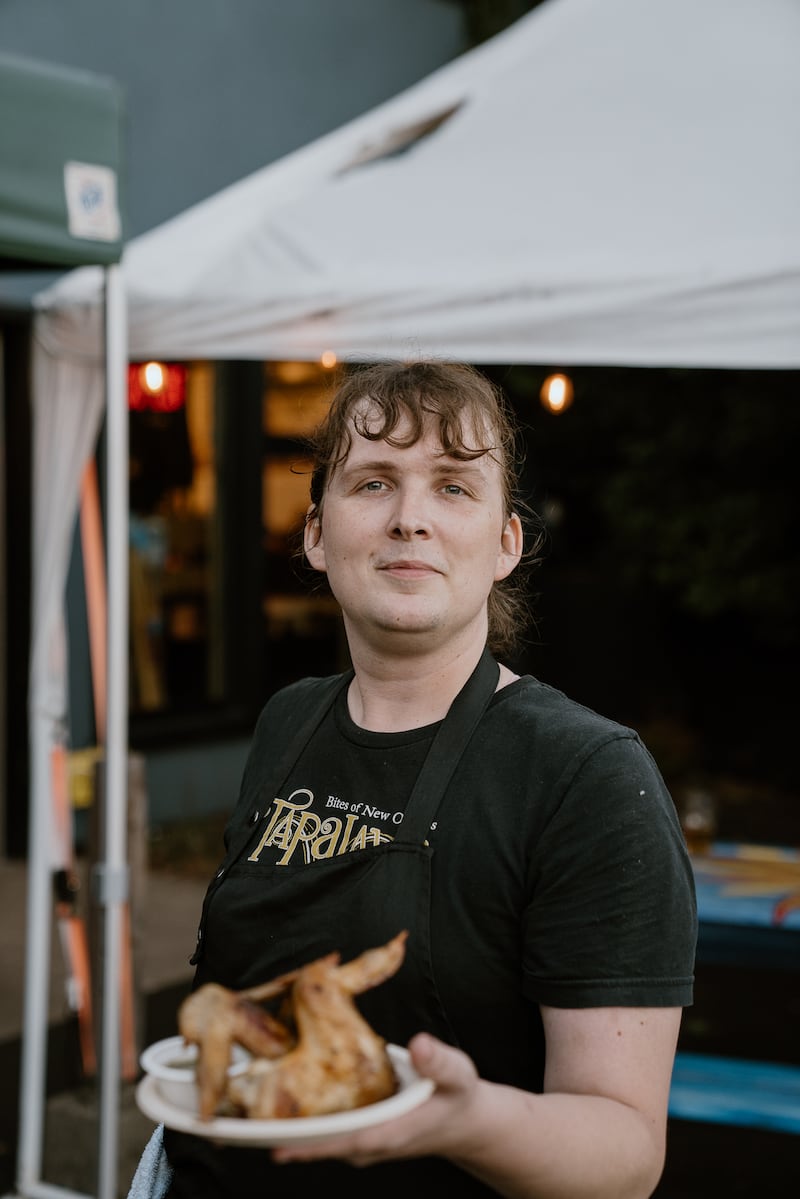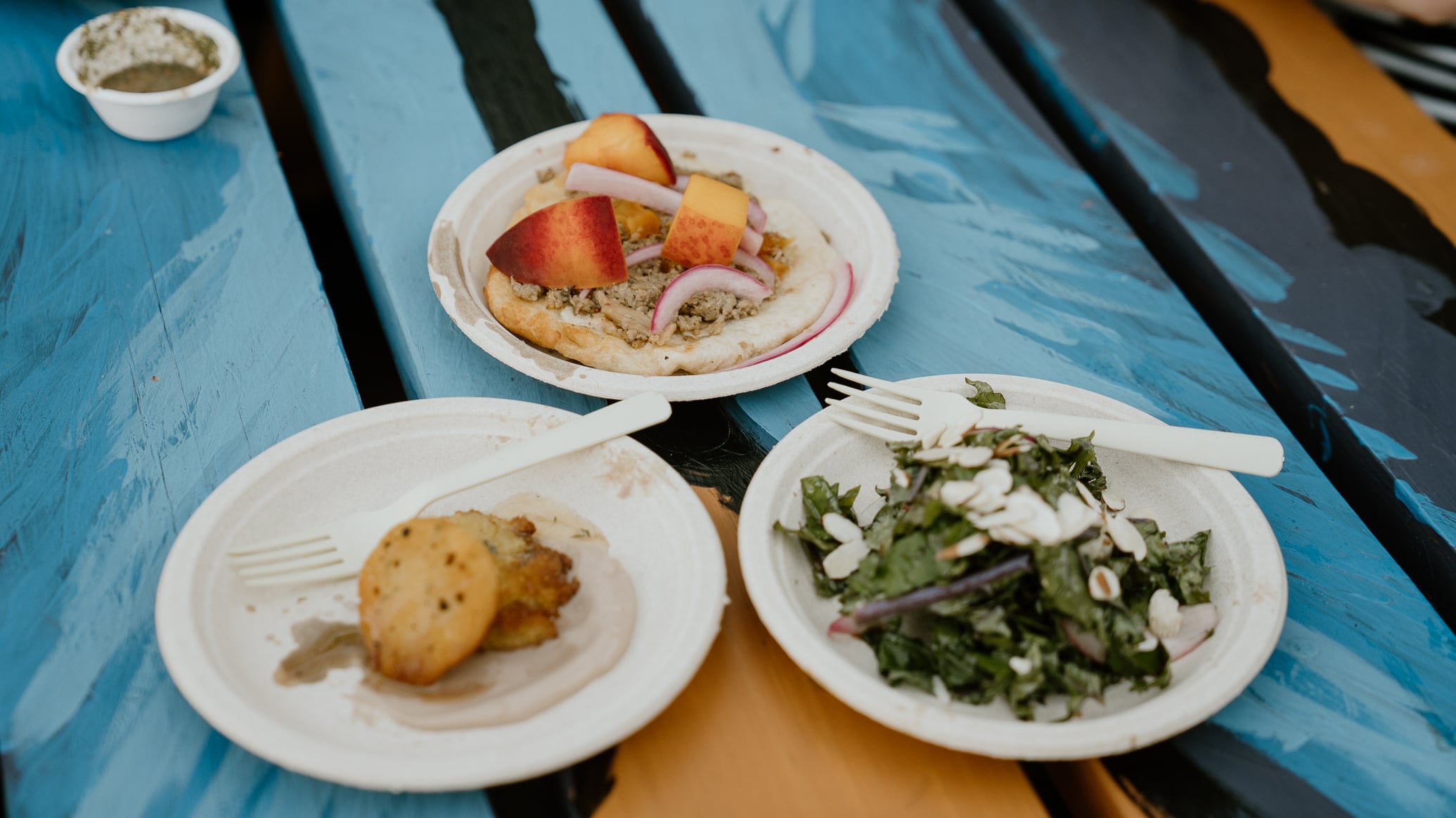Caraway Alexander looks to the past when considering the future of food. Two thousand years in the past, to be more precise.
Alexander’s semiregular pop-up concept Salona basks in the limitations imposed by techniques and ingredients available in ancient Rome. Alexander honed their skills at the nonprofit Stone Soup. With an open and diverse palate, Alexander’s kitchen credits include the acclaimed West African restaurant Akâdi, contemporary Thai eatery Phuket Cafe, Tokyo-based chain Afuri Izakaya. Brief stints at Italian restaurants around town inspired Alexander, an avowed history nerd, to start a pop-up named for the ruined capital city of the Western Roman Empire (now in modern Croatia).
“I consider myself a bit of a culinary orphan,” Alexander says. “That allows me to approach things from everywhere, with an original mind. I grew up with like Velveeta and shells as my routine meal. It was not a very culinarily developed place in my household. So I’m a free agent.”

Tomatoes and pasta, staples of modern Italian cuisine, were only introduced to the region during the Renaissance. Potatoes, corn, pepper, butter and citrus don’t make the cut either. Most spices were extremely rare before being brought over and traded along the Spice Route and Silk Road. Good old-fashioned fish sauce and salt were the most widely available seasonings.
Despite these constraints, Alexander concocts taste bombs fit for paupers and princes.
The primary meats available to common people in classical antiquity included pork (their main source of protein) as well as goat, lamb, chicken, eggs and game fowl like duck, geese and pigeons. The elite, meanwhile, enjoyed rarer meats, such as beef, venison, wild boar and rabbit as well as exotic poultry like peacock and ostrich—and even these were usually reserved for banquets and parties. Fish and other seafood delights were also common, especially along Mediterranean coastlines.
“It makes me sad that this art form is essentially dead now,” Alexander says. “This was how people ate for 1,000 years during the Roman Empire, during its rise, plateau and fall…and then we just sort of forgot about it.”
Salona’s pop-up on Saturday, Sept. 27, at The BeerMongers saw a menu celebrating commoners. Guests were allowed to order as many or few of the plates as they wanted for their experiences. A pickled sampler plate ($8), with brined peaches, red onion, quartered white turnips, and crudely hand-torn chicken of the woods mushroom pieces with sourdough bread to soak up the brine, opened the feast.
This acidic, vinegary first bite served as an apt palate coater and tart reprieve from the rest of the sweeter-leaning offerings. The main carb dish, fry bread topped with mushroom duxelle, tahini sauce and carrot ($14) was chewy and satisfying. It tasted like a pizza predecessor that wouldn’t come for nearly 1,000 years. Paired with the fungi fry bread was a simple side salad with mixed greens, slivered almonds, and picked red onion laced with oenogarum, a mixture of fish sauce, red wine, and olive oil considered the world’s original salad dressing.
Arguably the most approachable item on the menu this evening were intact chicken wings seasoned with asafetida (a dried herb of the carrot family) and smoked over hot charcoal, finished off in an air fryer—Salona isn’t exactly like ancient Rome, OK?—and served with defrutum, an ancient condiment consisting of reduced grape must, mustard, mint and white wine vinegar ($11).
The main attraction was a minced pork–stuffed shallot with dried cherries, tarragon, and pickled radish, served with fresh radicchio leaves ($16) meant to be eaten as a hand salad or Korean ssam. The juicy pork and natural sweetness of the allium and stone fruit contrasted perfectly with the slightly bitter radicchio, which lended a pointy crunch to the soft, tender meat. The meal was rounded out with an indulgent millet fritter dessert ($8) topped with thyme honey and pomegranate crème fraîche. It acted as a tasty concluding through line to the meal, as honey was the main source of sweetness before the invention of granulated sugar.
“I’m trying to capture as much as I can of the period because I think cooking and eating are both holistic experiences,” Alexander says. “Maybe people weren’t super playful at the time, and I understand why. They didn’t have much food to waste. But I’m playful.”
Before Alexander takes Salona to Brooklyn’s Café Mars in New York this coming January, they will host another pop-up at Mayfly on Oct. 19. No two menus are exactly the same, but Salona’s past menus at least offer something to drool over while diners wait for Alexander to move forward on a permanent version of the pop-up. It proves that those who fail to study history are doomed to repeat it, while those who do study it can repeat it with even better results.

